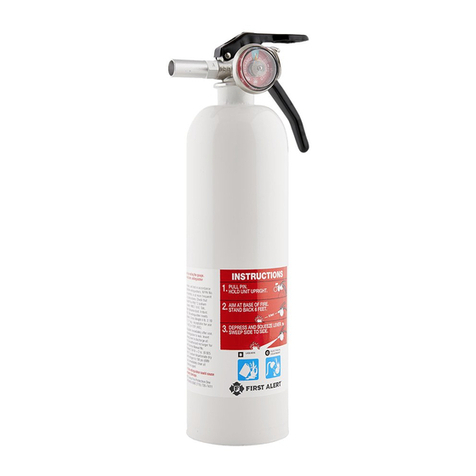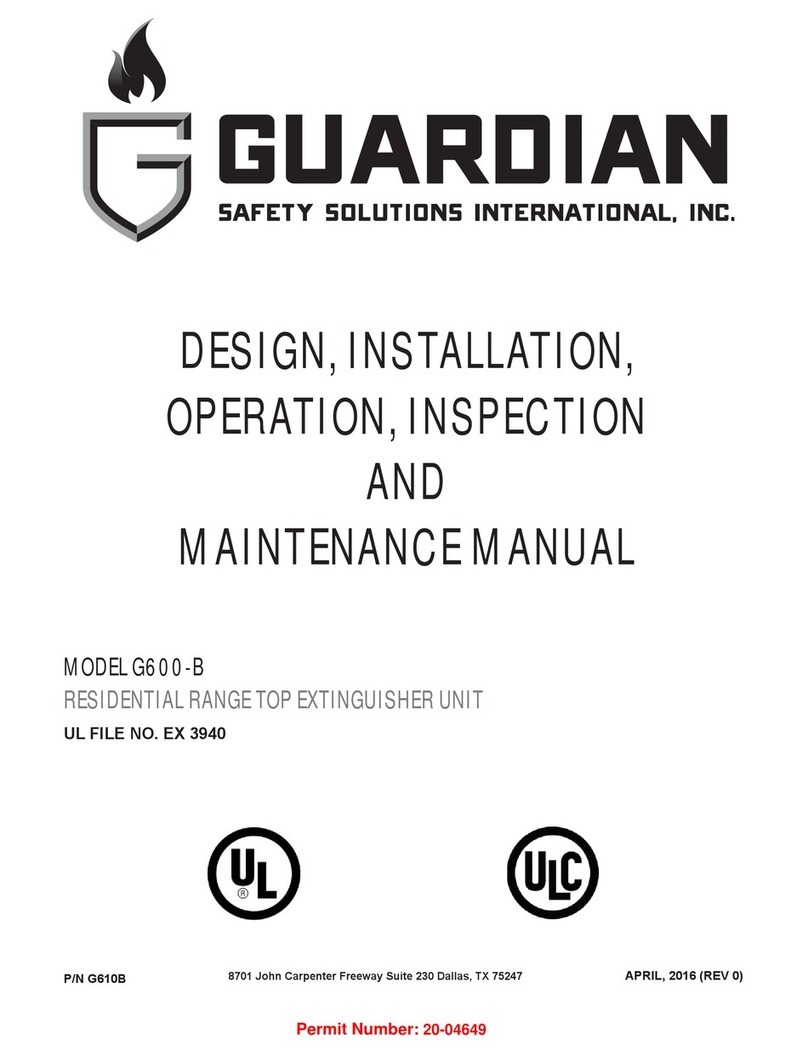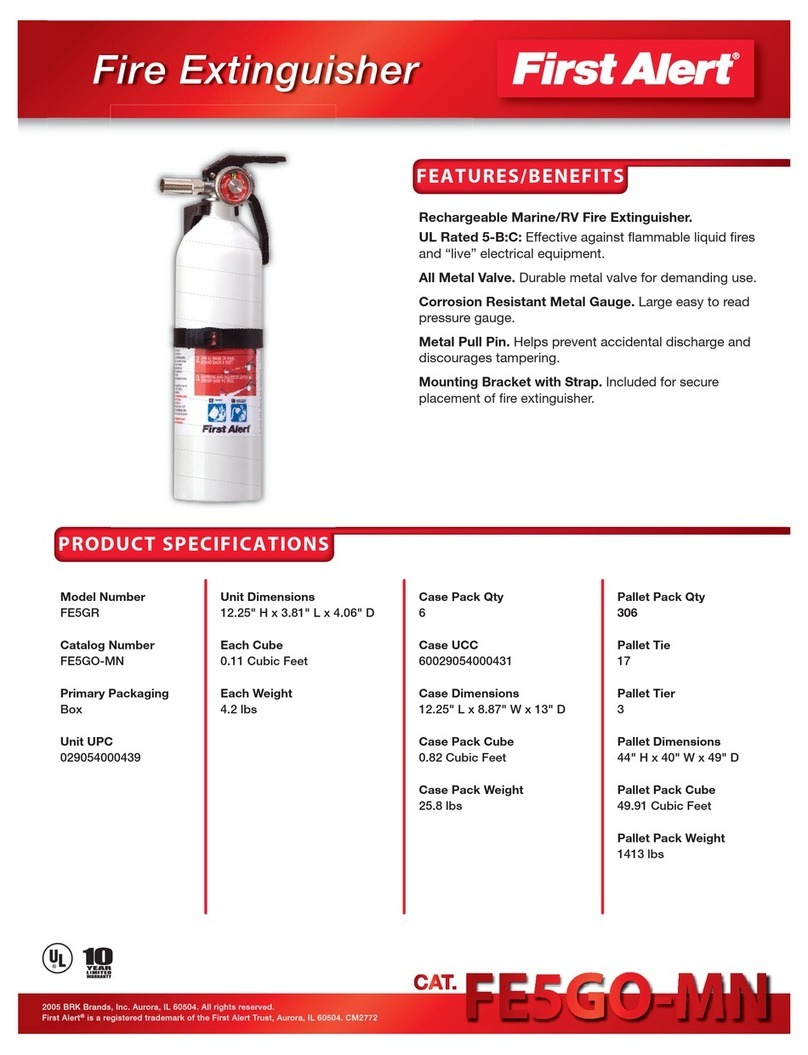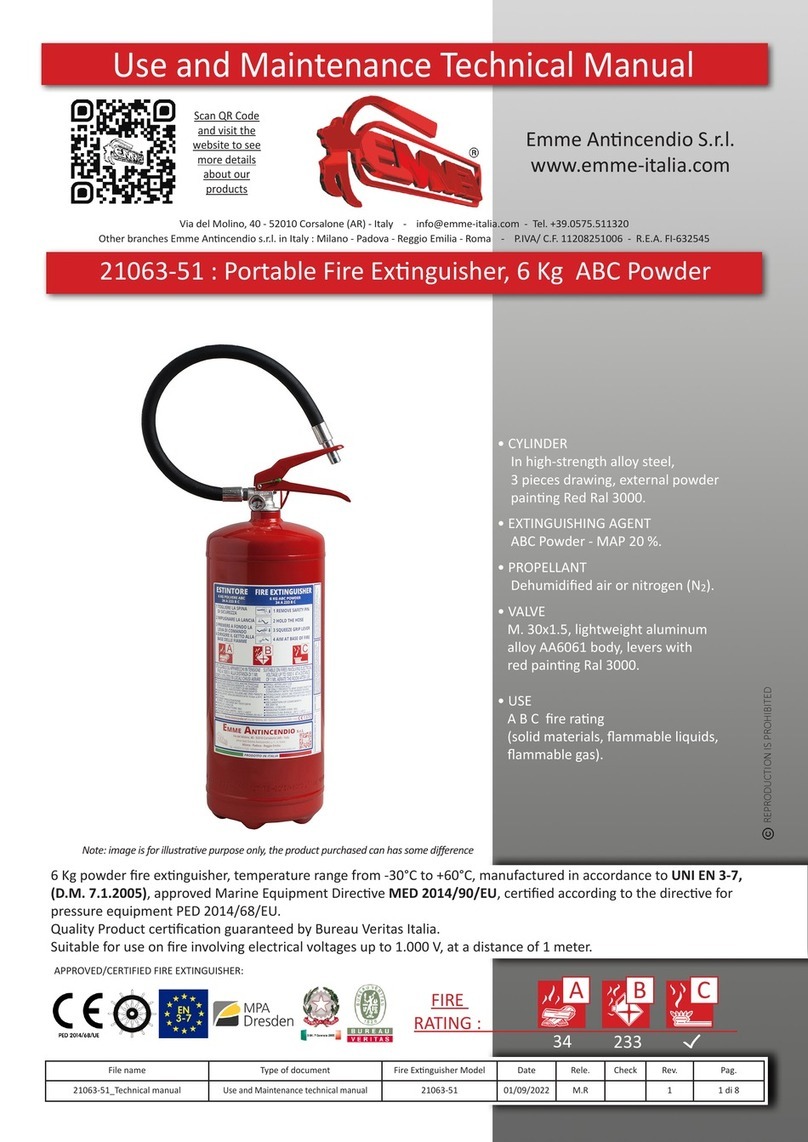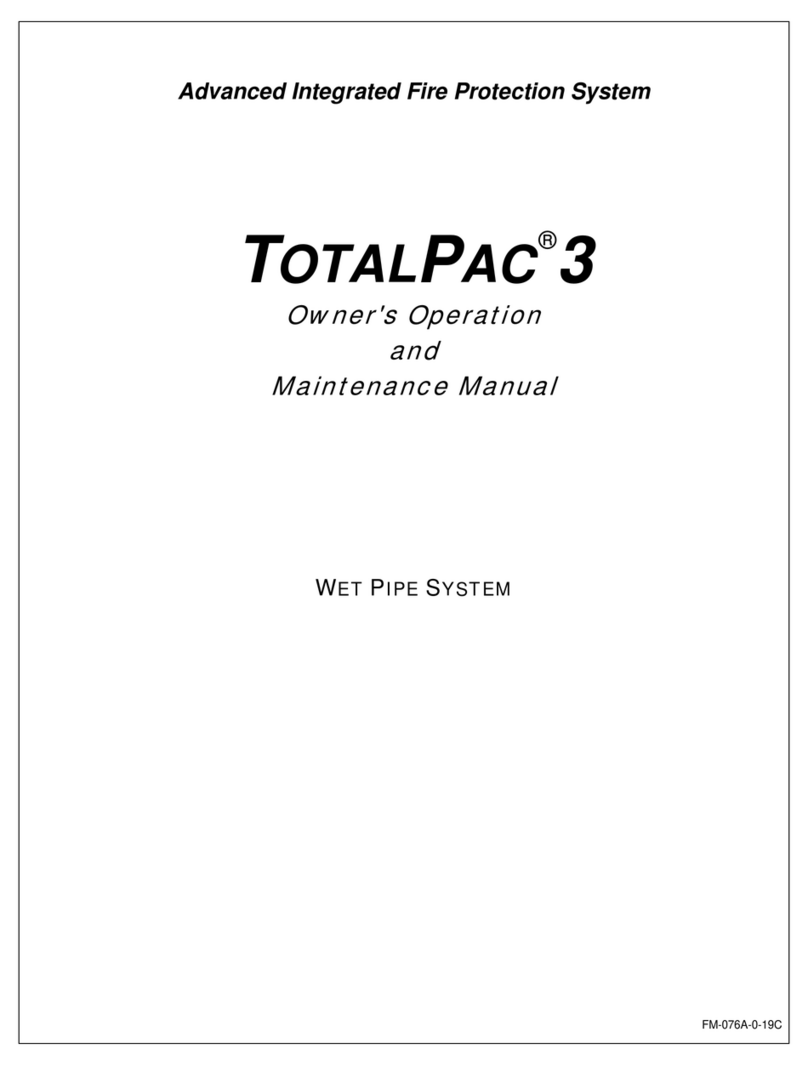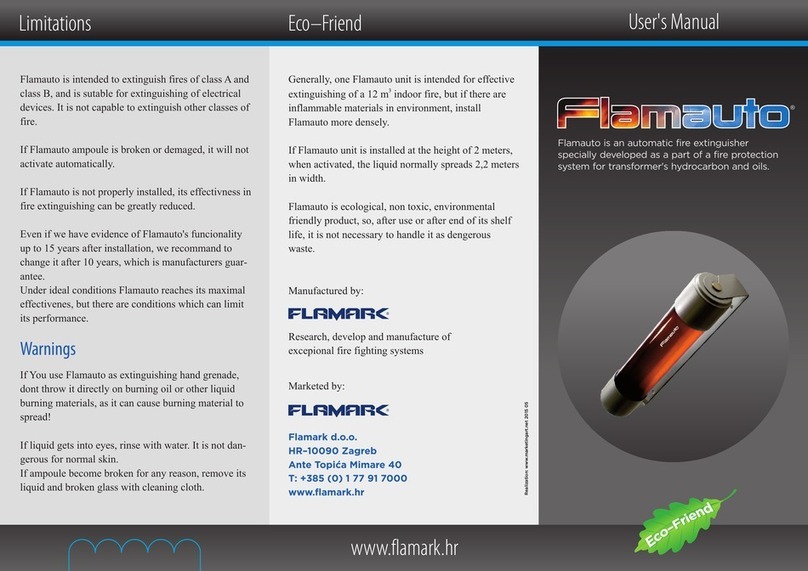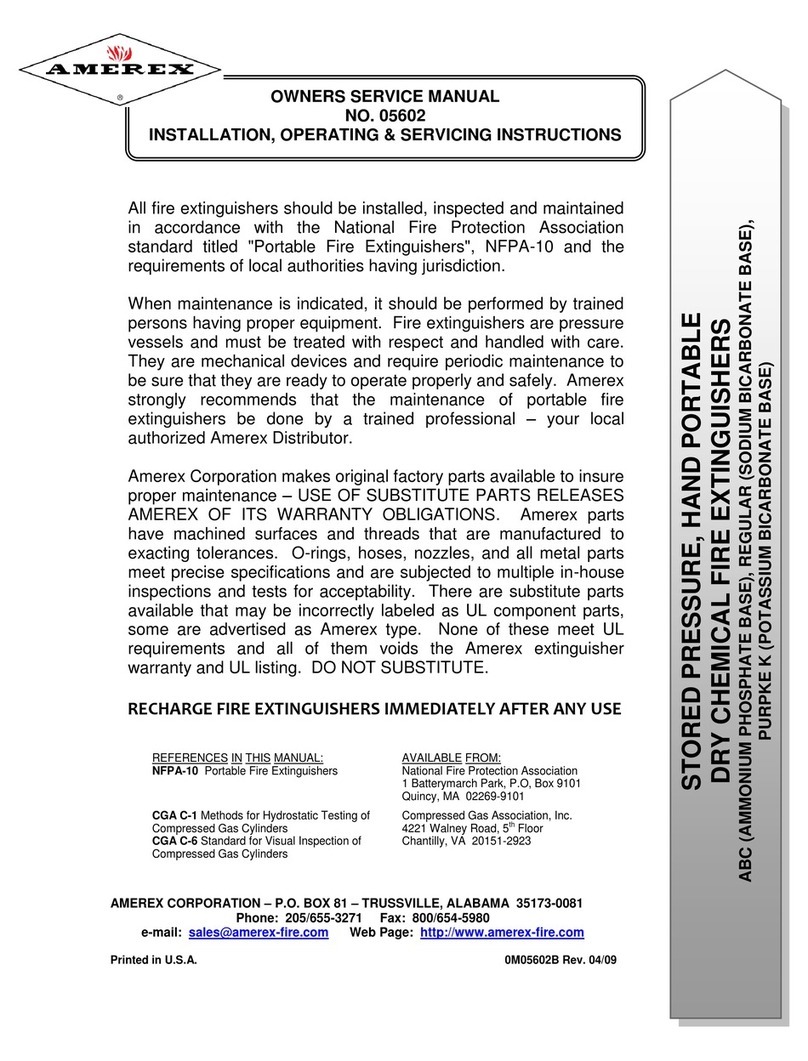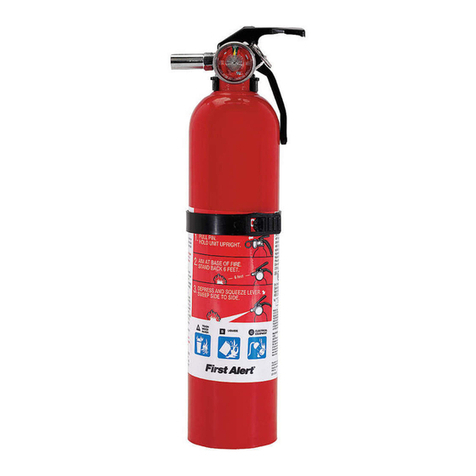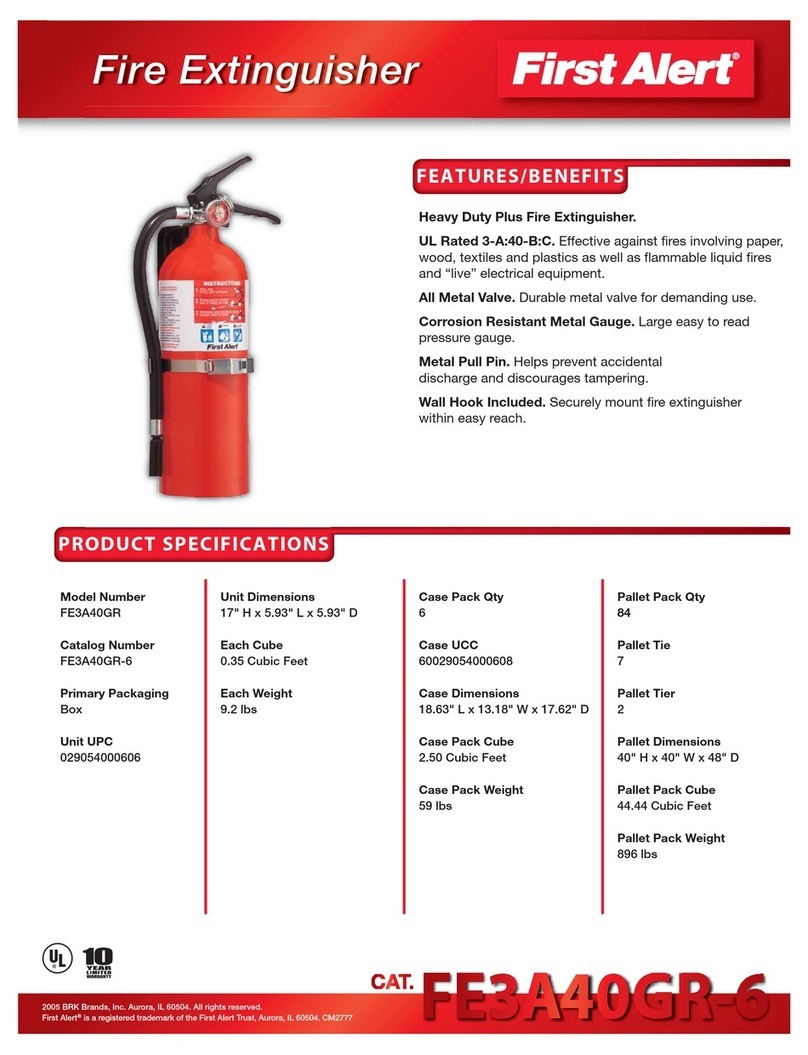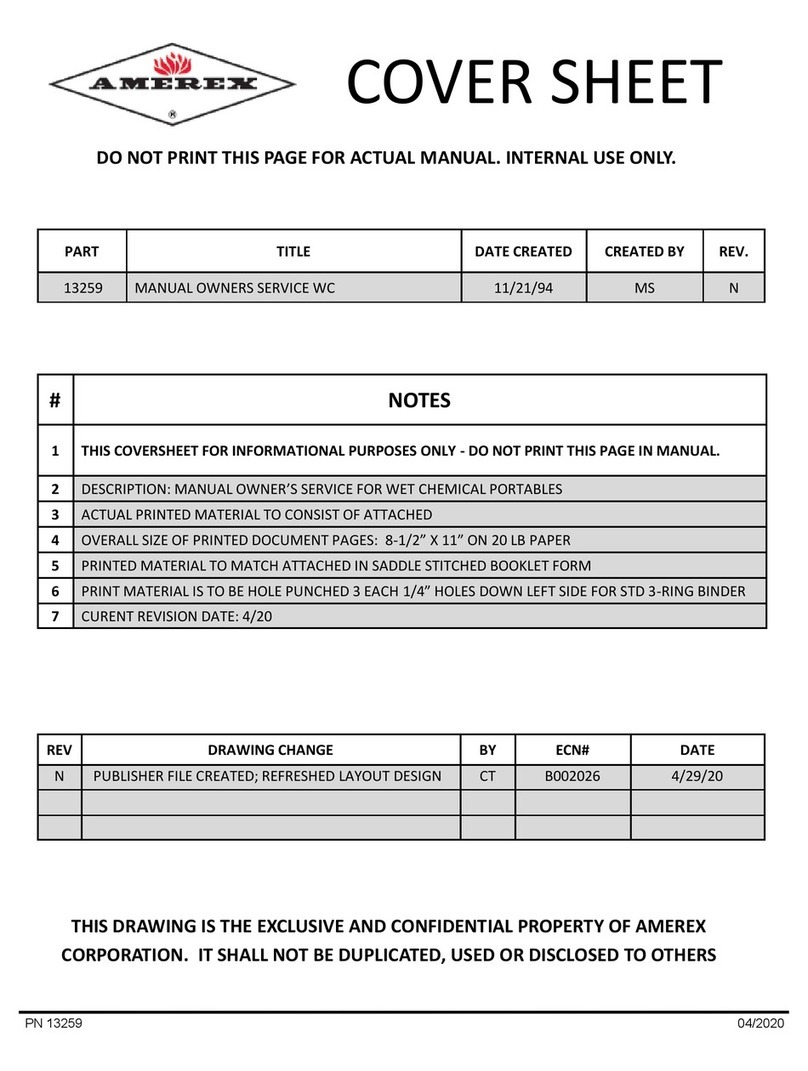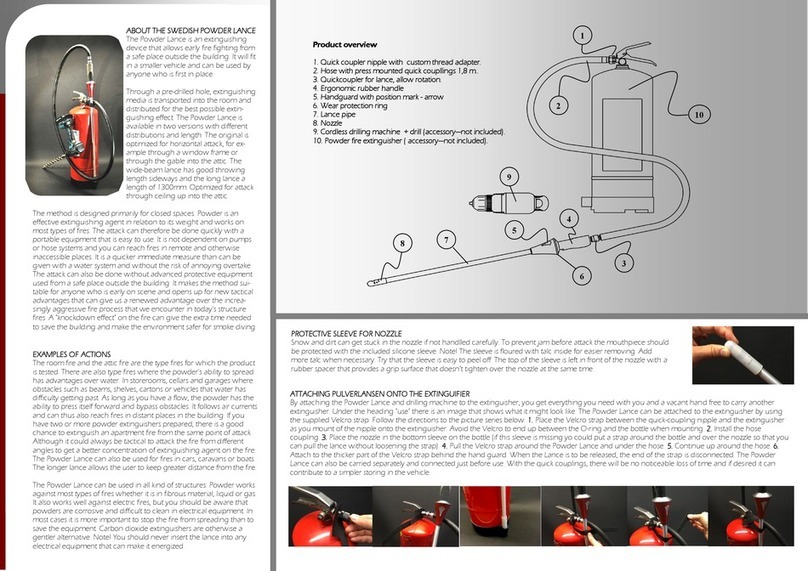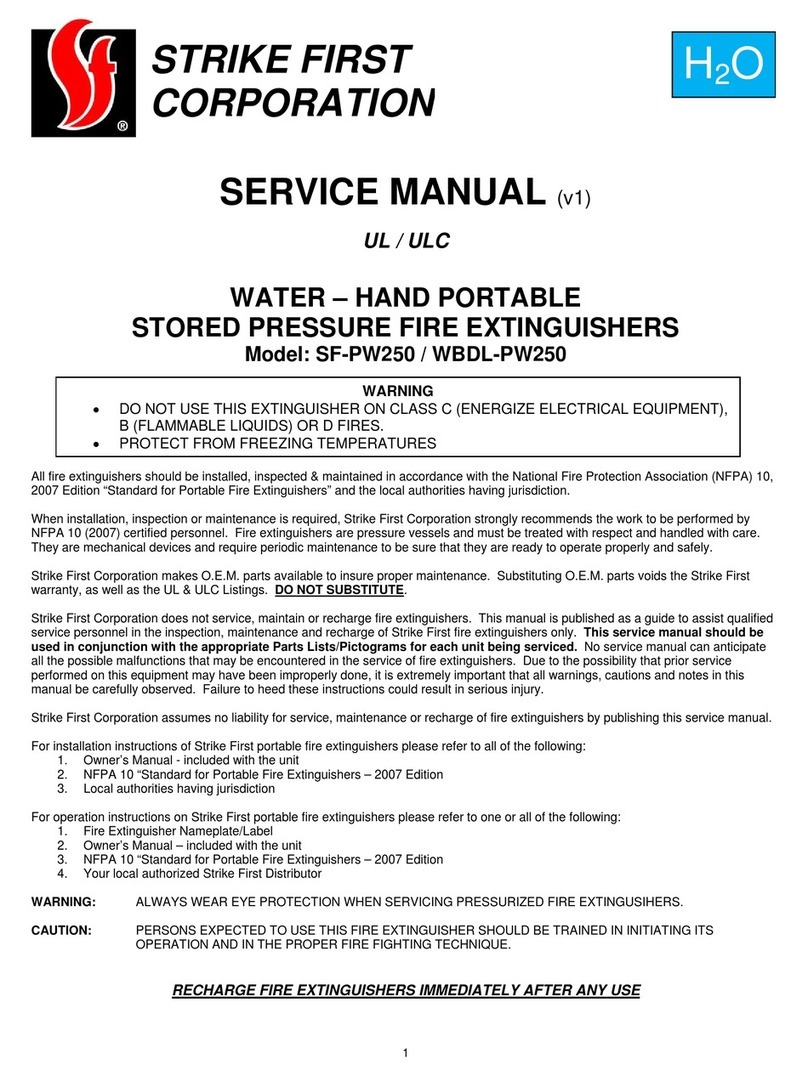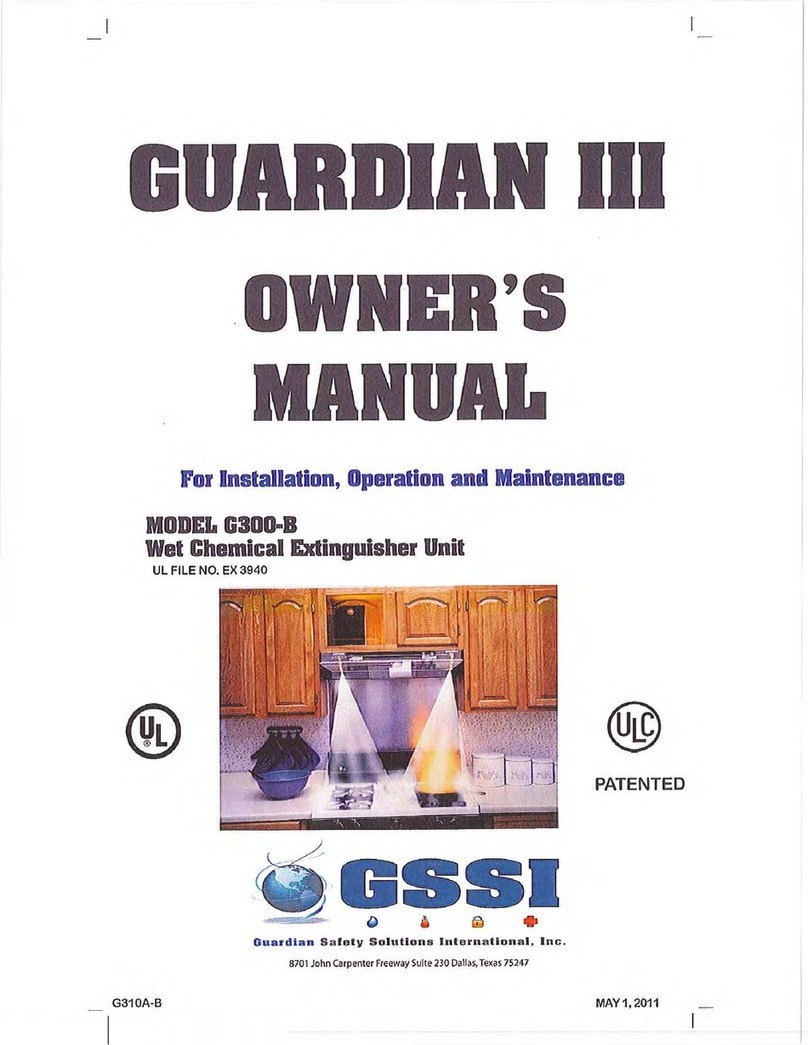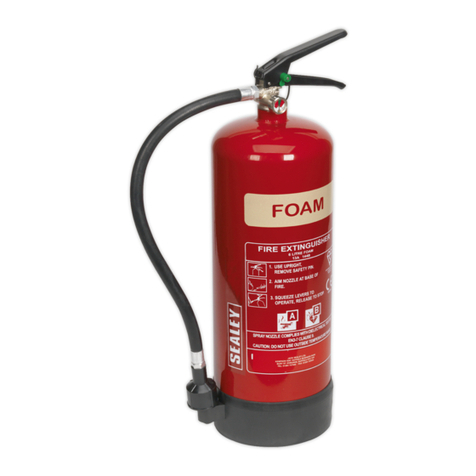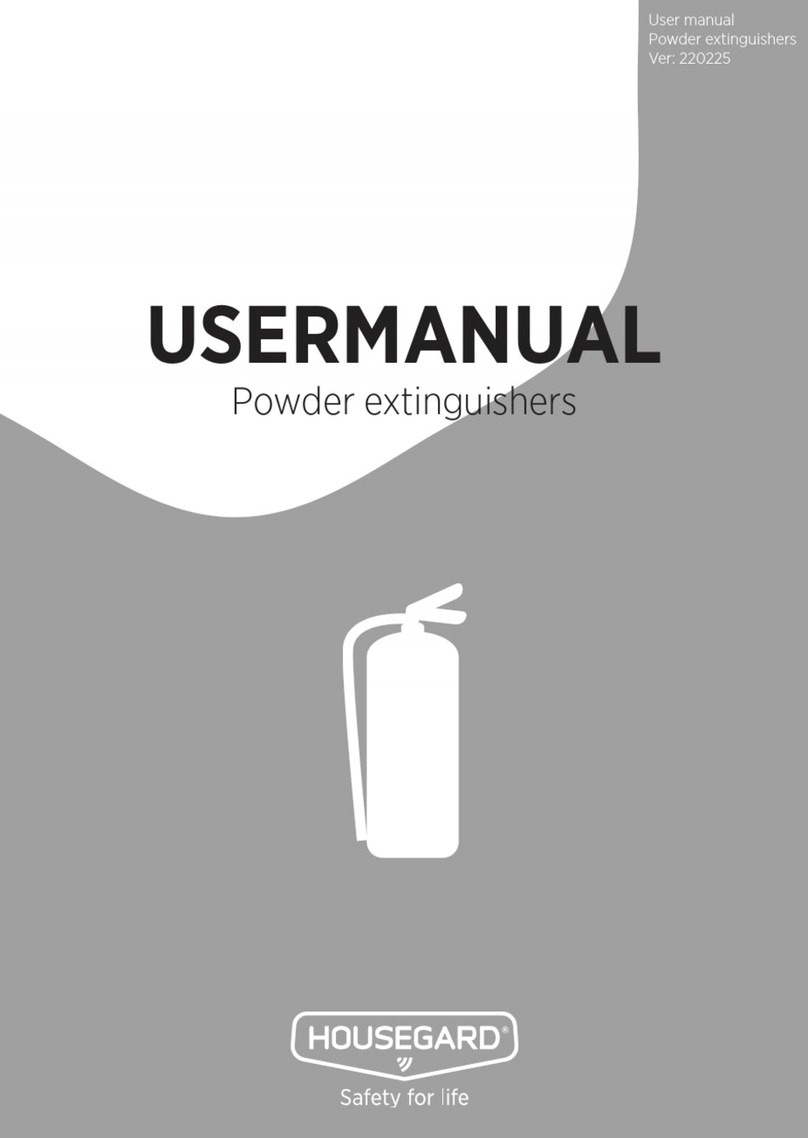
02/03/16 - AC - Rev.1
5.2 GENERAL INFORMATION
The user must always ensure that portable fire extinguishers are checked and maintained in the manner specified in
paragraph 5.8.1.
The qualified maintenance operator must perform the work at the frequency established by the current regulations.
This frequency may be increased because of environmental concerns, risks or specific regulatory requirements.
Each portable fire extinguisher, in part or whole, must be considered unusable by the operator when maintenance is
estimated that:
- It would be dangerous to use it in the state;
- Its status can prevent it to function in a satisfactory manner, for example in case of loss of the contents or pressure
higher than the established tolerances;
- The method of use are necessary for its proper use have become illegible.
In the absence of urgent action to remedy the problem, the maintenance worker must take the fire extinguisher
separate reporting on the tag of maintenance or of a document under 'EXTINGUISHER UNUSABLE STATE ", waiting to
remedy the problem.
The maintenance must also examine the support of the extinguisher and report any defect or damage visible to the
user.
5.3 SAFETY PRECAUTIONS FOR MAINTENANCE OPERATOR
The service operator must be informed of the safety precautions to be taken during handling, management, treatment
and provision of extinguishing agents disposal.
These operations must conform to the current regulations.
5.3.1 Fire safety during maintenance
The user must take into account the fact that the maintenance and charging procedures may temporarily reduce the
effectiveness of preventive measures implemented at its headquarters, for fire protection. Therefore, you must
observe the following points:
a) according to the fire risk, it is generally good practice to take in a specific area, a limited number of portable fire
extinguishers in the implementation of maintenance operations;
b) where appropriate, place of the fire extinguishers in the area where parts have been picked up the fire
extinguishers to be subjected to maintenance;
c) more preventive measures against fire may be needed during the maintenance period.
5.3.2 Individual safety
To perform each operation of assembly and disassembly of the valve, always lock the body of the extinguisher in a vise
and use a suitable protective equipment.
During the opening of each portable extinguisher:
a) make sure there is no residual pressure in the cylinder and hose. Act on the needle of the pressure control valve to
evacuate the residual pressure;
b) slowly unscrew the valve until complete exit of the residual pressure. Do not continue loosening until the pressure
has not been fully released.
Any sudden release of pressure may cause the projection of parts or contents of portable fire extinguisher.
5.4 RECHARGE OF THE FIRE EXTINGUISHERS
The user must define the methods to recharge or replace portable fire extinguishers that have been partially or
completely discharged for any reason or whose inspection results indicate the need to reload.
The fire extinguisher must be completely emptied and the extinguishing agent is disposed.
On the tag of maintenance or document delivered to the user, the service operator will indicate the heading "REBUILT"
and the date of the charge.
